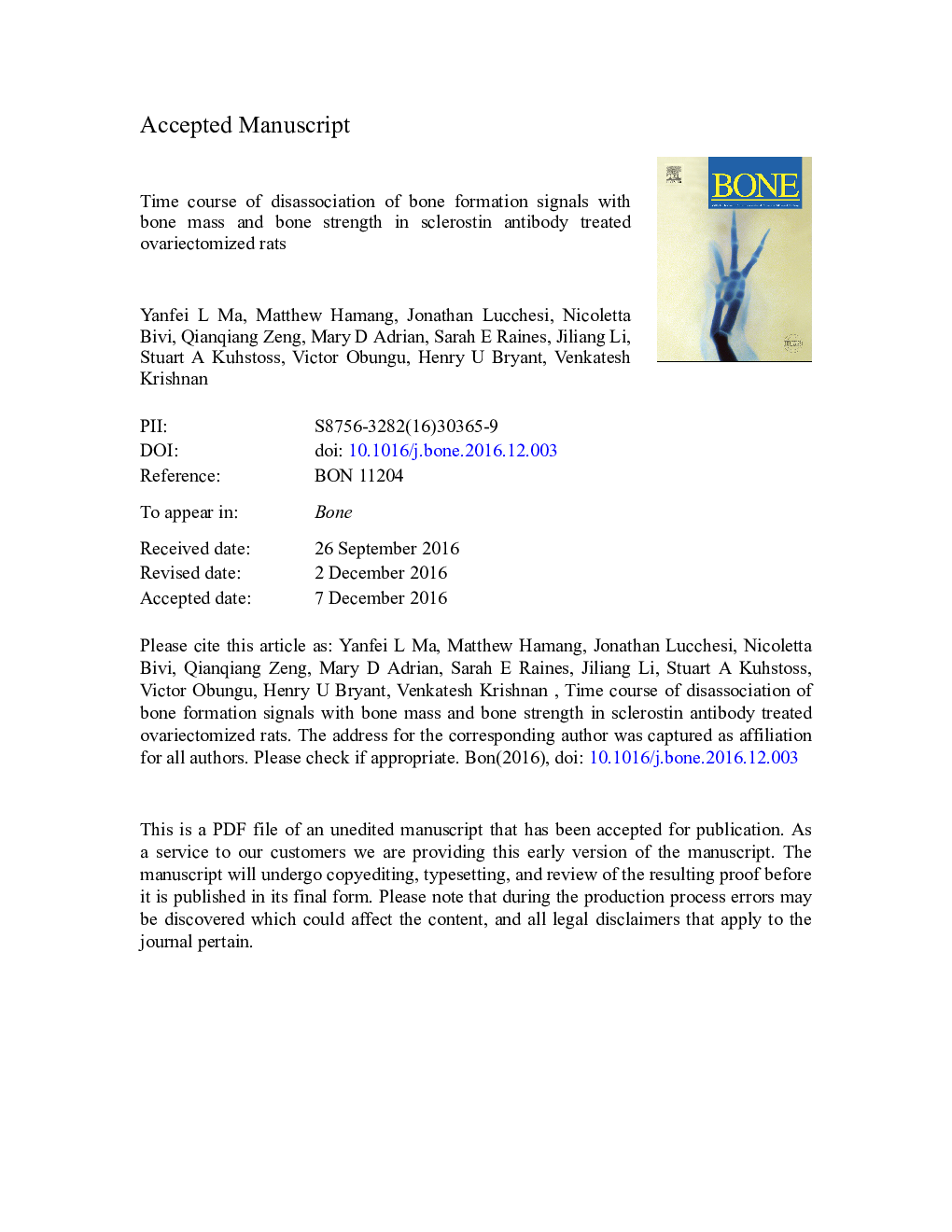| کد مقاله | کد نشریه | سال انتشار | مقاله انگلیسی | نسخه تمام متن |
|---|---|---|---|---|
| 5585403 | 1568122 | 2017 | 34 صفحه PDF | دانلود رایگان |
عنوان انگلیسی مقاله ISI
Time course of disassociation of bone formation signals with bone mass and bone strength in sclerostin antibody treated ovariectomized rats
ترجمه فارسی عنوان
دوره زمانی از بین بردن سیگنال های استخوان سازی با توده استخوانی و استحکام استخوان در موش های صحرایی مبتلا به آنتی بادی اسکلروستین
دانلود مقاله + سفارش ترجمه
دانلود مقاله ISI انگلیسی
رایگان برای ایرانیان
کلمات کلیدی
پوکی استخوان، تشکیل استخوان، استخوان هیستومورفومتری، آنتیبادی اسکلروستین،
موضوعات مرتبط
علوم زیستی و بیوفناوری
بیوشیمی، ژنتیک و زیست شناسی مولکولی
زیست شناسی تکاملی
چکیده انگلیسی
Sclerostin antibodies increase bone mass by stimulating bone formation. However, human and animal studies show that bone formation increases transiently and returns to pre-treatment level despite ongoing antibody treatment. To understand its mechanism of action, we studied the time course of bone formation, correlating the rate and extent of accrual of bone mass and strength after sclerostin antibody treatment. Ovariectomized (OVX) rats were treated with a sclerostin-antibody (Scle-ab) at 20Â mg/kg sc once weekly and sacrificed at baseline and 2, 3, 4, 6, and 8Â weeks post-treatment. In Scle-ab treated rats, serum PINP and OCN rapidly increased at week 1, peaked around week 3, and returned to OVX control levels by week 6. Transcript analyses from the distal femur revealed an early increase in bone formation followed by a sustained decrease in bone resorption genes. Lumbar vertebral (LV) osteoblast surface increased 88% by week 2, and bone formation rate (BFR/BS) increased 138% by week 4. Both parameters were below OVX control by week 8. Bone formation was primarily a result of modeling based formation. Endocortical and periosteal BFR/BS peaked around week 4 at 313% and 585% of OVX control, respectively. BFR/BS then declined but remained higher than OVX control on both surfaces through week 8. Histomorphometric analyses showed LV-BV/TV did not further increase after week 4, while BMD continued to increase at LV, mid femur (MF), and femoral neck (FN) through week 8. Biomechanical tests showed a similar improvement in bone strength through 8Â weeks in MF and FN, but bone strength plateaued between weeks 6 and 8 for LV. Our data suggest that bone formation with Scle-ab treatment is rapid and modeling formation dominated in OVX rats. Although transient, the bone formation response persists longer in cortical than trabecular bone.
ناشر
Database: Elsevier - ScienceDirect (ساینس دایرکت)
Journal: Bone - Volume 97, April 2017, Pages 20-28
Journal: Bone - Volume 97, April 2017, Pages 20-28
نویسندگان
Yanfei L Ma, Matthew Hamang, Jonathan Lucchesi, Nicoletta Bivi, Qianqiang Zeng, Mary D Adrian, Sarah E Raines, Jiliang Li, Stuart A Kuhstoss, Victor Obungu, Henry U Bryant, Venkatesh Krishnan,
